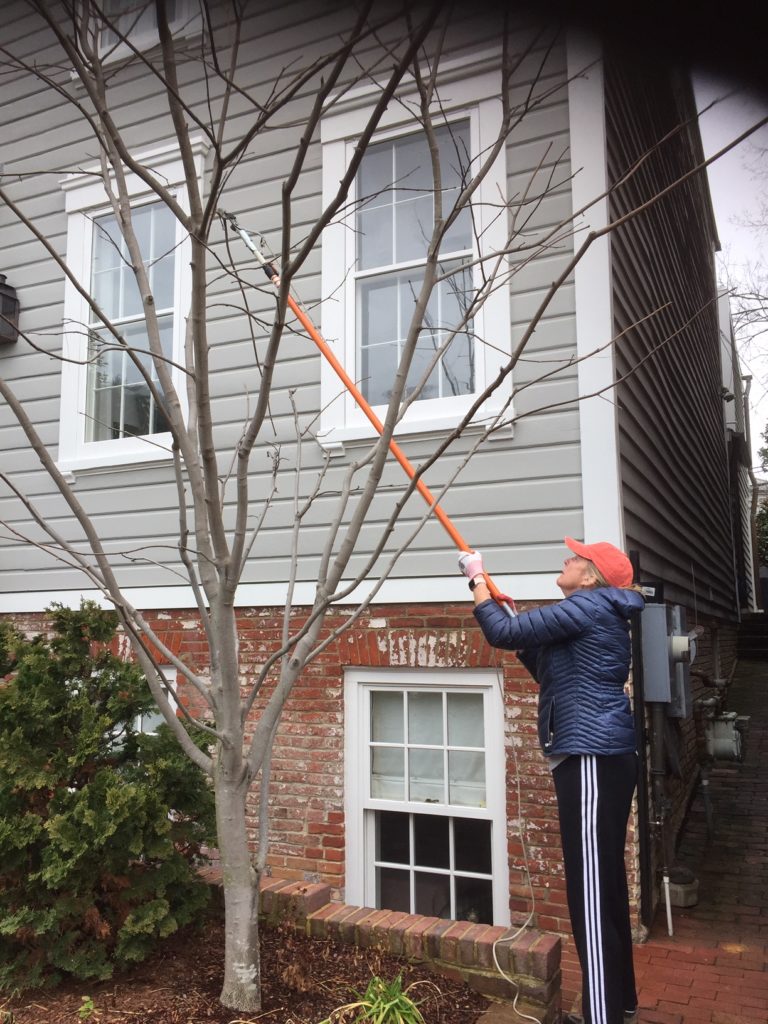Winter dormancy is a great time to prune ornamental and young trees to improve their architecture, structural integrity and form. This Yellowwood [ Cladrastis kentukea ] was in real need of correction after having been pruned badly last summer.

BEFORE : If you look at the “Before” images below, you can see that previously, it had been pruned so that virtually every branch was cut so that each was the same exact length, assuming a weird lollipop shape. This shape is very unnatural and unfortunate for ANY tree! It almost looks like a fan. We often see trees that have been pruned in this fashion when the owner really only wanted for the tree to be shortened or neatened a bit. Pruning trees into lollipops is a bad idea for the tree’s health because, in the same way that shearing a shrub creates a more dense exterior shell of foliage, lollipop trees suffer from poor architecture that blocks light from the interior of the tree. Branches become long and spindly and can break more easily, there is much less interior foliage for photosynthesis, and the tree becomes stressed. Plus, it’s silly looking and awkward. You don’t want your tree to look and feel like a cartoon.

AFTER : To correct this, Pruning by Design made staggered cuts at many different levels in the tree canopy being careful to create a balanced, soft form. You can see in the diagram of the cuts above, that it is very possible to allow more natural characteristic branching by pruning the tree correctly. Trees grow in this way for a reason, because it provides an evolutionary advantage. We keep and encourage a strong leader and main branches with shorter lateral branches inside. We cleaned up broken or weak branches, and shortened some of the overly long side branches that extended over the walk and into the neighbor’s doorway. By creating layers within the tree, the tree’s future health is improved by allowing light and air circulation in, important for preventing fungal growth and insect attacks. The Yellowwood’s structure is now much more graceful, too. Now it looks like a tree, not a lollipop.







